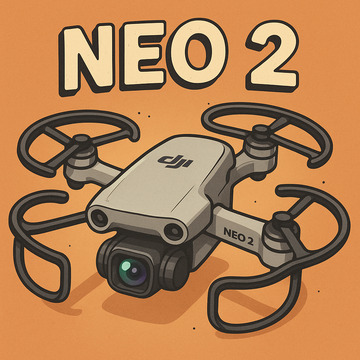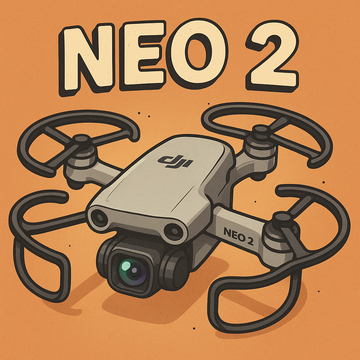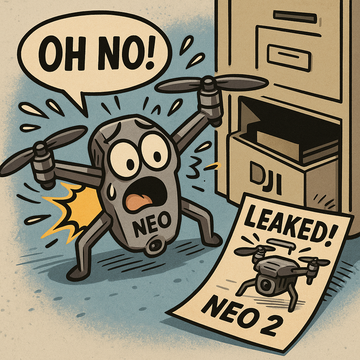In the world of ultra-compact drones, every millimeter counts—especially in the camera sensor. The original DJI Neo was a hit for its portability, but it was often limited by its smaller sensor size (likely 1/2-inch or similar).
The announced DJI Neo 2 changes that equation entirely. By upgrading to a rumored 1/1.3-inch CMOS sensor, DJI isn't just making a slight improvement; they are initiating an Image Quality Revolution in the sub-$350 category.
Here is a deep dive into why this sensor upgrade is the most significant feature of the new Neo 2 and how it will transform your aerial footage.
Why Size Truly Matters in Sensor Technology
When you talk about camera sensors, larger size always translates into a fundamental leap in image quality. Here is the technical breakdown of what the move to a 1/1.3-inch sensor means for your videos and photos:
1. Low-Light Performance: Bye-Bye Grain
The core benefit of a larger sensor is its ability to gather significantly more light. The jump from a 1/2-inch to a 1/1.3-inch sensor results in a much greater surface area.
-
Less Noise, More Detail: More light hitting the sensor means the camera doesn't have to boost the ISO as high to achieve a proper exposure. This directly translates to cleaner, less grainy footage when shooting at twilight, indoors, or capturing moody nighttime cityscapes.
-
Wider Dynamic Range: The ability to capture more light also improves the drone's dynamic range. The Neo 2 will be much better at preserving detail in both the brightest highlights (like a setting sun) and the deepest shadows simultaneously.
2. Cinematic Flow: 4K/60fps and 10-bit D-Log
The larger sensor doesn't operate in a vacuum—it unlocks higher performance video modes that were previously impossible at this price point.
-
Smooth Slow Motion: The rumored support for 4K at 60 frames per second (fps) doubles the maximum frame rate of the previous model. This means you can now slow your 4K footage down by 50% for super-smooth, cinematic effects without sacrificing resolution.
-
Professional Color Grading: The larger sensor facilitates higher data capture, enabling the use of 10-bit D-Log color profile. This professional-grade color space captures up to one billion colors, retaining maximum detail in the highlights and shadows. For creators who color grade their footage, this is a non-negotiable upgrade that allows for vibrant, customizable looks.
3. Flagship-Inspired Features in an Ultra-Compact Body
The 1/1.3-inch sensor is the same size found in several of DJI's higher-end, heavier drones, meaning the Neo 2 essentially packs flagship image quality into a palm-sized package.
The key takeaway is that the DJI Neo 2 is no longer just a "vlogging toy." With this sensor and its accompanying video capabilities, the Neo 2 is poised to become the most capable, high-quality aerial camera for filmmakers, travelers, and content creators who demand professional results while adhering to the sub-250g weight class.
If your goal is to capture stunning, color-rich, and clean footage in varied lighting conditions, the Neo 2's new sensor is the definitive reason to make the upgrade.
#DJINeo2 #DJI #MiniDrone #Sub250gDrone #TravelDrone #BudgetDrone #CinematicDrone #4KDrone #VloggingDrone #DronePhotography







